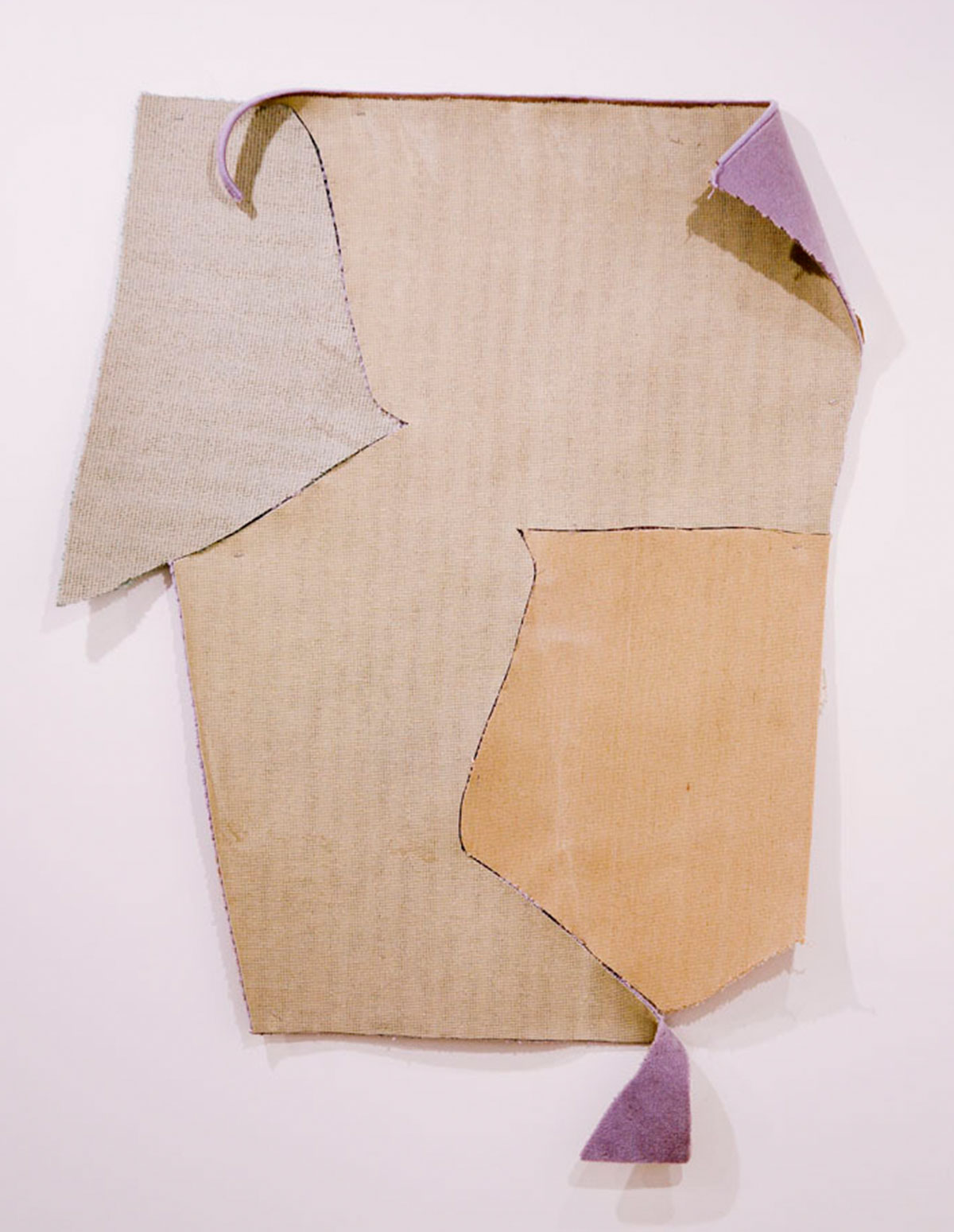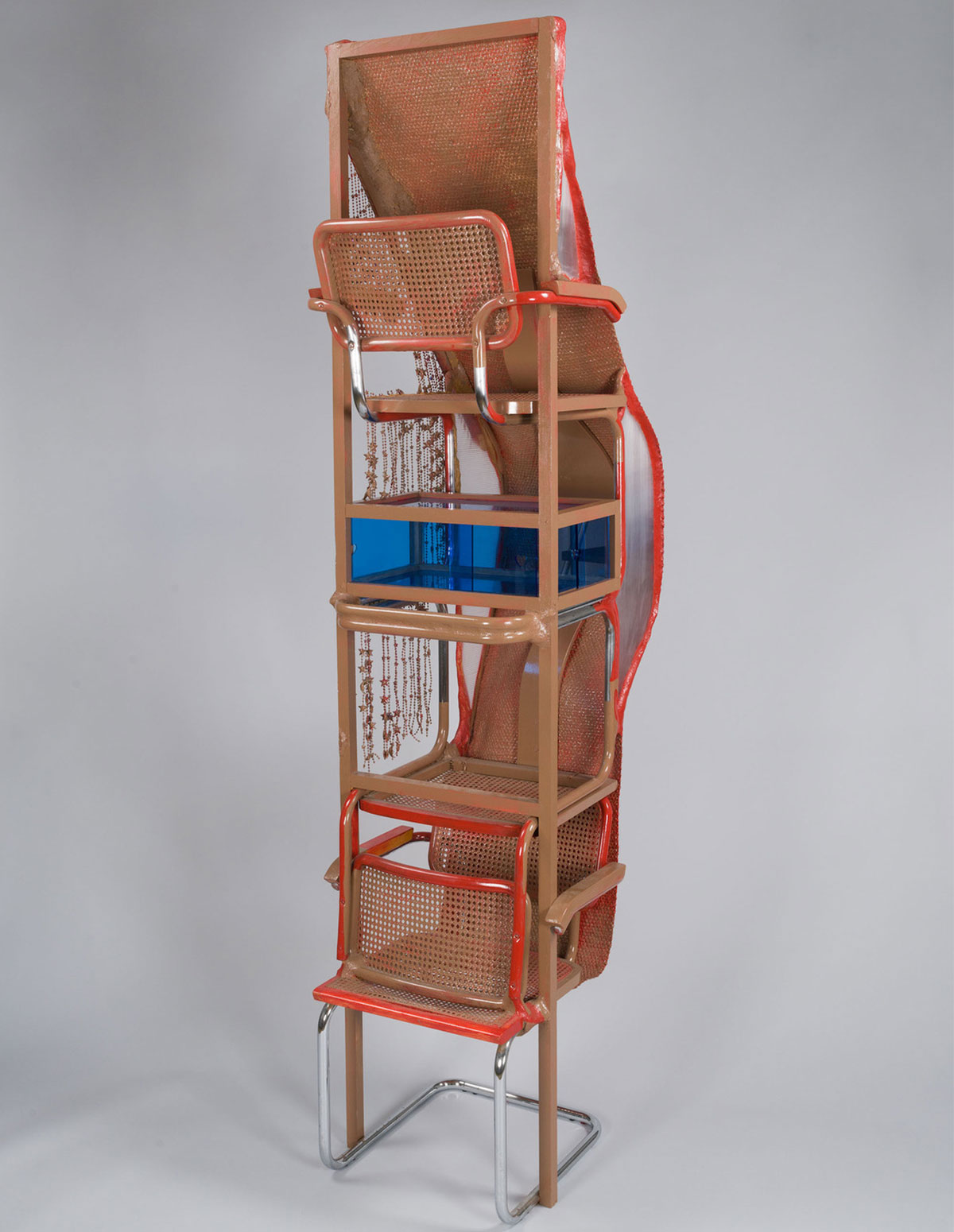We’re celebrating the 50th anniversary of Earth Day with a roundup of artists in our collection who reuse materials from everyday life in their work. From Alison Knowles’s found object sculpture to Tejo Remy and Droog Designs’s eco-conscious chest of drawers, these artists are interested in reimagining new uses for “old” material.

I think the main value of this work is to transform our daily actions into art actions and thereby transform both.
For five decades, Alison Knowles has sampled our world of ordinary things to fuse art and life. Event Thread strings together objects and natural materials she has found during her wanderings around New York City. Cast-off bits of urban detritus and driftwood find their way into these tangled webs, which resemble talismans or charms. She hangs the sculptures with a single nail, allowing the weight of each item held within to determine their snakelike forms. The focus of what is displayed is less on the material object itself and more on the moment of its discovery—the artist’s encounter with it as an “event.”

Tejo Remy’s chest of drawers reflects an eco-conscious shift in designs of the 1990s. Designers sought materials and processes that were more sustainable and also conceived provocative, conceptual products to raise questions in the minds of their users.
The Dutch collective Droog Design, with which Remy was affiliated, similarly advocated low-tech, recycled materials, while protesting the increasing consumerism of modern society. You Can’t Lay Down Your Memories straps together salvaged drawers that have been encased in new maple shells. They are interchangeable and can be combined or removed at will. According to the designer, the chest not only recycles drawers, but also repackages the ideas and memories associated with each. The result is a subtle admonishment against forgetting the past.

Usually, a sculptor transforms a substance from one shape to another (marble becomes the statue of a goddess; metal becomes an abstract shape). Yet artist Gedi Sibony questions that basic definition by presenting the elements of his work—cardboard boxes, vinyl window shades, industrial flooring, and so on—almost without altering them. Sometimes funny, sometimes lyrical, his works animate the unlikely personalities of anonymous, mass-produced things.
The Sorceress, for example, is a simple collage of carpet fragments, the edges of which curl back modestly to reveal a plush purple pile. The date range indicated here signals that this effect took many years to achieve, as the artist—who often lives with and changes his works over time—coaxed the edges of the hanging form into shape.

Jessi Reaves’s works address the ways function and livable design intermingle, challenge, and play with the conventions of art. She was influenced by her first post-graduate job at an upholstery shop where leftover bits and accumulated scraps became the starting point for her sculptures. Each work combines at least one functional and recognizable element—lighting, seating, shelving—with an assortment of textiles, accessories, and decorative embellishment.
Blue heart shelf is made of stacked Cesca chairs, a Marcel Breuer 1928 design. However, rather than stacked in order to be stored, their structure becomes a means to store, with plexiglass drawers inserted within the gaps of the resulting frame. Through Reaves’s practice, our relationship with everyday objects transforms into something wondrous and strange.